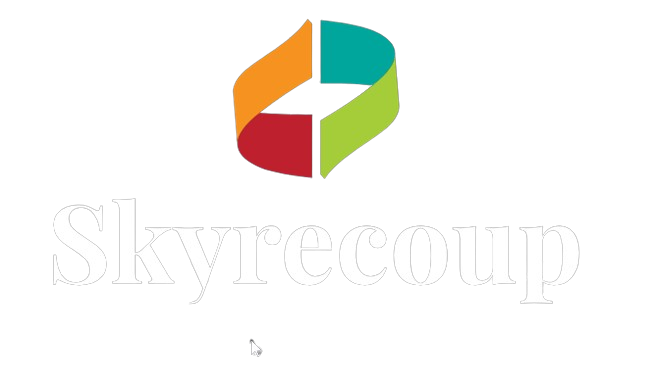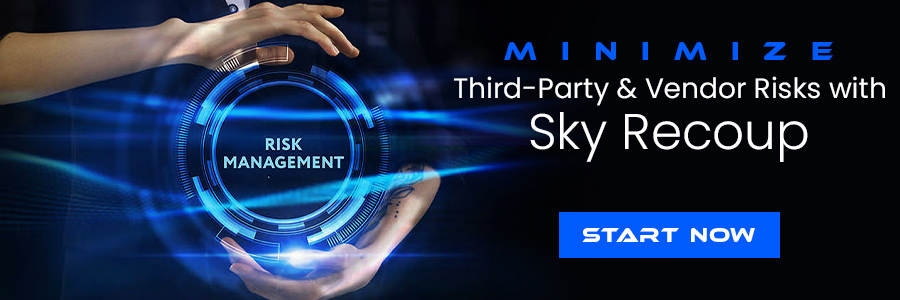In today’s interconnected business world, companies pay great attention to third-party risk management (TPRM) and third-party vendor risk management (TPVRM) because they depend on external firms to conduct everyday business activities. These collaborations have several advantages, but we can see scams too i.e. third-party vendor risk or third-party risk management.
Organizations always feel powerless when they face data breaches, operational disruptions, cyber threats, asset theft, scammer activities, etc. To avoid future scams, company firms need to differentiate between third-party risk management and third-party vendor risk management. Additionally, firms can hire skilled investigators and legal experts like Sky Recoup, who help to minimize the third-party vendor risk. They can easily deal with existing and potential risks and actively protect their interests.
What is Third-Party Risk Management?
Third-party risk management is a systematic approach to finding, analyzing, and eliminating company risks associated with third parties. It helps business owners to make sure that third parties don’t harm their organization’s reputation, finances, or compliance status in any way.
What are the Differences Between Vendor Risk & Third Party Risk?

Scope of Risk
Remember, vendor risk is caused by firms that offer goods and services directly to a business organization. They cause operational disruptions, data breaches, financial instability, and compliance failures in a company. For instance, if a cloud service provider doesn’t maintain good security and uptime, it will directly impact the firm’s data safety and everyday business operations.
On the other hand, third-party risk is a much broader concept. It is not limited just to vendors. It includes all external firms that do business with a company in any way. They may be company partners, contractors, affiliates, and even fourth parties. They often cause significant risks to business organizations, such as regulatory non-compliance, indirect operational failures, reputational damage, and data privacy issues. For example, if a third-party contractor leaks a customer’s data, it will impact all parties involved.
Risk Categories
When dealing with vendor risks, companies pay attention to operational, financial, and compliance issues. All these are caused by the vendors. As a business owner, you must keep a close eye on all vendors you are dealing with. Blind trust in them can be detrimental to your organization.
On the other hand, third-party risk includes numerous issues, such as cybersecurity, reputational, financial, operational, and compliance problems. Any external party can be involved in it.
Monitoring and Mitigation
Vendor risk monitoring is more about tracking transactions. As per the set pattern, company owners analyze key performance indicators, compliance adherence and service-level agreements (SLAs) from vendors. To reduce risks, they must conduct surprise audits, analyze business contracts and review the performance of all vendors. Based on the report, they need to take immediate actions to limit the impact of illegal activities on the organization.
On the other hand, you need to have a broader approach to monitor and eliminate third-party risks. Constant monitoring of all third parties, regulatory compliance, and swift elimination of cyber risks will help get rid of issues caused by different third parties.
Regulatory and Compliance Considerations
When it comes to vendor risk compliance, company owners have peace of mind. They just have to instruct their vendors to comply with relevant laws, regulations, and industry standards. And, see if they are following the due protocol or not. Ask them to document all business contracts, meet security requirements and handle business data adequately. Remember, non-compliance to set industry norms can result in operational disturbances, data theft, fines, and legal issues.
When it comes to third-party risk, companies often face problems in ensuring all parties are complying with the industry norms. The problem intensifies if contractors, consultants, resellers, affiliates, and subcontractors work in different legal jurisdictions. Ensure all parties are complying with global and industry-specific regulations without fail.
Impact of Failures
Vendor risk failures can disturb your company badly. For example- if a vendor delivers low-quality software, it can affect your organization’s everyday business activities, customer service and revenues also. It will lead to decreased customer trust and great damage to your business in the future. Nevertheless, you can easily identify and address the problem.
In contrast, third-party risk failures can damage several aspects of your business. For example, a data leak from any third party can spoil your company’s reputation and trigger legal action. Even customers will avoid buying your products and services in the future. The complexity of third-party relationships will make it difficult for you to track and eliminate issues.
Strategic Importance
Vendor risk management enables you to keep everyday business activities going as usual. Always remember, most vendors are involved in product manufacturing, IT services, logistics, cloud computing, etc. If they don’t perform well, it can lead to compliance violations, production delays, quality issues, etc. If you fix vendor risk successfully, your company offers high-quality services to costumes & gets more business opportunities.
On the other hand, third-party risk management is more complex due to involvement of many parties. Their failure can affect your brand, compliance and business volume also. So, effective management of third party risks helps build a strong brand and & maintain long-term resilience.
What are Solutions to Minimize Third-Party & Vendor Risks?
Conduct Thorough Due Diligence
Before you engage any vendor or third party, conduct background checks and demand their compliance certifications. Also, evaluate their financial health, reputation and cybersecurity posture. It will help ensure you work with reliable partners right from the beginning.
Define Terms and Conditions
Make contracts with vendors and third parties. Mention roles, responsibilities, security expectations, and compliance requirements. It will help everyone to behave in accordance with agreement and avoid issues.
Conduct Audits
From time to time, you must conduct audits to see if third parties or vendors are working appropriately or not. Take the required action to protect your interests if you find violations of the established rule of conduct.
Use Third-Party Risk Management Solutions
Remember, despite your best efforts, failures and violations of established rules are possible. So, use Sky Recoup third-party risk management solutions. We analyze risks continuously, unearth hidden scams or rule violations, and enable you to take preventative steps before the damage is done. With our help, you can ensure all parties and vendors are cooperating with you as per the established norms. And, nothing illegal is happening in or against your company.
Conclusion
Minimizing third-party and vendor risks is a continuous process that demands accurate planning and implementation at the right time. Understanding the differences between the vendor risk and third-party risks and using the above mentioned strategies is important. It will enable you to protect your organization from multiple vulnerabilities and issues. Feel free to access Sky Recoup’s third-party risk management solutions. We analyze and eliminate all issues caused by vendors and third parties.








